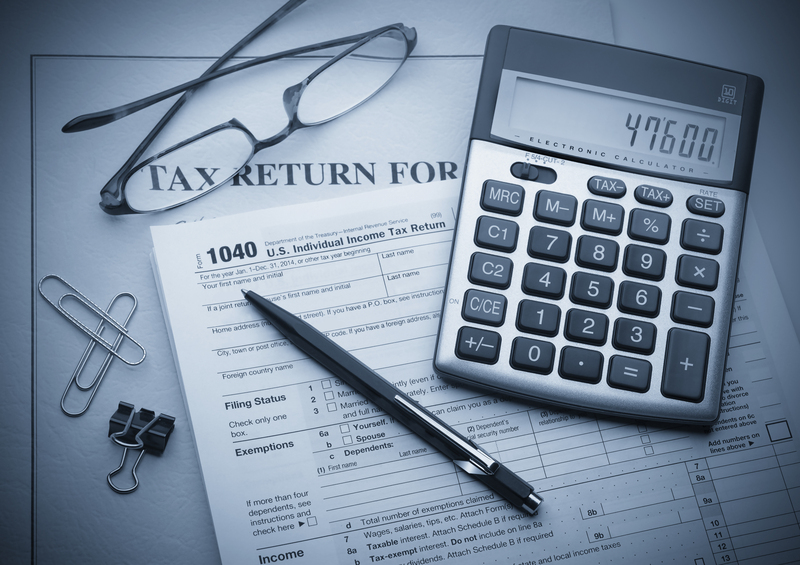Storing a Freezer Correctly: Top Tips and Tricks
Posted on 15/06/2025
Storing a Freezer Correctly: Top Tips and Tricks
Do you know how to store your freezer in a way that maximizes both its lifespan and your food quality? Whether you are preparing for a big event, stocking up for emergencies, or just streamlining your weekly meal planning, storing a freezer properly is crucial. This comprehensive guide delves into the best tips and tricks to ensure your freezer operates efficiently, your food remains safe, and your energy bills stay low.
Why Proper Freezer Storage Matters
Efficiently storing your freezer is more important than you might think. Not only does correct organization help you avoid food waste, but it also ensures your appliance runs optimally, prevents ice build-up, and makes it easier to locate items when you need them. A well-arranged freezer can also maximize storage space, ensuring you make the most of every cubic inch available.
- Food safety: Prevents contamination and maintains food quality.
- Energy savings: Efficient freezers use less electricity, reducing your monthly bills.
- Convenience: Quickly locate ingredients and avoid buying duplicates.
- Appliance lifespan: Reduces wear and tear, prolonging your freezer's operational life.

Preparing Your Freezer for Efficient Storage
Before you begin organizing your freezer, take the time to prep it for storage. Cleanliness and an upfront organization strategy are the keys to ongoing freezer success.
Step 1: Deep Clean Your Freezer
- Unplug the freezer and remove all food items.
- Check expiration dates and discard any expired or freezer-burned food.
- Mix a solution of baking soda and warm water to clean shelves and drawers. Baking soda helps neutralize odors.
- Let all parts dry completely before plugging back in and restocking.
Step 2: Sort and Categorize Food
Before restocking, group similar items together. For example:
- Meats and fish
- Vegetables and fruits
- Bread and baked goods
- Prepared or cooked meals
- Ice cream and desserts
Tip: Use clear storage containers or resealable freezer bags for better visibility and stacking.
Step 3: Label Everything
Clearly label each package with:
- Name of the item
- Date it was frozen
- Expected use-by date (recommended)
This habit will help you use food while it's freshest and prevent "mystery meals" from accumulating at the bottom of your freezer.
Top Tips for Storing a Freezer Correctly
1. Freeze Foods Quickly and Properly
The faster food freezes, the smaller the ice crystals that form, preserving texture and flavor. Spread items out on trays, freeze in a single layer, then transfer to bags or containers once frozen.
2. Avoid Overloading Your Freezer
While a full freezer holds temperature better than an empty one, overfilling blocks air circulation. Leave some space between packages and allow cold air to flow freely around items. This is crucial for efficient freezer storage.
3. Stack and Arrange for Accessibility
Heavier items on the bottom, lighter on top. Place foods you use most frequently near the front for easy access, and stack similar items together when possible. Rotate items when you bring home new groceries, placing newer foods in the back and moving older items forward--a simple practice known as First In, First Out (FIFO).
4. Utilize Bins and Dividers
Bins, baskets, and drawer dividers can help segment different categories or types of food. Consider using stackable bins or baskets that fit your freezer's dimensions. Not only does this prevent small items from getting lost, but it also allows you to pull out entire sections to quickly find what you need.
5. Maintain an Inventory
Keep a running list (either on paper or digitally) of everything inside your freezer along with freeze dates. This freezer storage inventory reduces overbuying, saves money, and helps plan meals more efficiently.
- Consider posting an erasable whiteboard or notepad near your freezer for quick reference.
- Apps like NoWaste or Listonic can make tracking easier if you prefer digital solutions.
6. Set the Correct Freezer Temperature
The ideal freezer temperature is 0?F (-18?C) or lower. Avoid frequent opening and closing, which causes temperature fluctuations and potential freezer burn.
7. Package Foods Appropriately
- Use airtight, moisture-vapor resistant packaging to prevent freezer burn.
- Remove as much air as possible. For bags, use a straw to suck out extra air before sealing.
- Divide large meals or batch recipes into single servings for quick and hygienic defrosting.
8. Defrost Your Freezer Regularly
If you have a manual-defrost freezer, make defrosting a periodic task. Excessive frost build-up reduces efficiency and limits storage space. Defrost at least once or twice a year, or when frost thickness exceeds 1/4 inch.
9. Don't Freeze Everything
Certain foods don't freeze well (for example, watery vegetables, whole eggs in shell, or some dairy). Research food freezing best practices for each item, and avoid freezing foods that will lose quality.
10. Use Freezer-Safe Containers Only
Always select containers labeled as freezer-safe. These are engineered to withstand cold temperatures and minimize moisture loss. Cheap containers can crack at low temperatures and compromise food safety.
Maximizing Freezer Space: Clever Organization Hacks
Want to truly maximize your freezer storage potential? These hacks will help you squeeze in more food and keep everything organized:
- Use square or rectangular containers: They fit together better and reduce wasted space compared to round ones.
- Store items vertically: Use magazine holders or small boxes to organize and store bags upright (great for freezers with shelves).
- Freeze liquids flat: Lay freezer bags with soups or sauces flat on a tray until solid, then store upright like files.
- Label the shelves or bins: Enforce "zones" for meats, veggies, snacks, and more.
- De-package bulk items: Remove excess packaging from frozen vegetables or bulk foods and transfer them to labeled bags or containers.
- Utilize ice cube trays: Freeze herb pastes, broths, or purees in small portions for easy use later.
Food Safety: Preventing Freezer Burn and Spoilage
Preventing freezer burn and spoilage is all about careful packaging and correct temperature management. Follow these safety tips:
- Wrap foods tightly and use quality freezer wrap, foil, or bags.
- Avoid refreezing thawed food, unless it's cooked in between to kill bacteria.
- Regularly rotate stock to use older items first.
- Don't overload with fresh food at once--it can temporarily raise the temperature and harm already frozen items.
Signs Your Freezer Storage Needs Improvement
If you notice any of these issues, it's time to reassess your freezer storage system:
- Excessive frost build-up
- Difficulty finding items or forgotten foods
- Packages with signs of freezer burn
- Food developing odd tastes or smells
- High energy bills
Implementing the above freezer organization tips can solve most of these common headaches.
Special Considerations: Chest Freezers vs. Upright Freezers
Chest freezers are spacious but can become disorganized if not managed carefully. Use stackable bins, reusable shopping bags, or color-coded baskets to group types of foods. Label each section. Consider keeping an inventory sheet taped to the lid.
Upright freezers offer easier access with shelves and drawers, but items can get buried in the back. Shallow baskets and clear containers are essential for keeping order. Always rotate stock from back to front and top to bottom.
Eco-Friendly Freezer Storage Tips
- Use reusable silicone or glass containers to reduce plastic waste.
- Defrost regularly for optimal efficiency and lower energy consumption.
- Freeze in bulk to cut down on packaging and shopping trips.
- Store leftovers to minimize food waste.
Maintaining Your Freezer for Long-Term Success
- Wipe up spills as soon as they happen to prevent sticky messes and odors.
- Check the door seal monthly and keep it clean and flexible for optimal performance.
- Vacuum the condenser coils annually (if accessible and user-serviceable) to keep your freezer running at peak efficiency.
- Always ensure your freezer is on a level surface and has adequate ventilation space behind and on the sides.

Frequently Asked Questions: Freezer Storage Best Practices
How Full Should I Keep My Freezer?
Aim to keep your freezer at least 75-80% full for optimal efficiency. If you're low on food, fill empty space with bags of ice or bread to help maintain a stable temperature.
How Long Does Food Last in the Freezer?
Generally, most foods are best used within 2-12 months (meat and poultry: 6-12 months; fruits and vegetables: 8-12 months; bread: 2-3 months; prepared meals: 2-6 months). Always check for signs of freezer burn or spoilage before consuming.
Can I Store a Freezer in My Garage?
You can store freezers in the garage, but make sure to follow the manufacturer's recommendations regarding ambient temperature. Extreme cold or hot conditions can affect freezer performance and reliability.
Conclusion: Unlock the Full Potential of Your Freezer Storage
Storing your freezer correctly is all about planning, organization, and routine maintenance. By following these expert tips and practical tricks, you can rest assured that your food remains safe, your energy costs low, and your appliance in top condition for years to come. Whether you're a seasoned meal-prepper or a busy family, these freezer storage strategies will help you make the most of one of your kitchen's greatest allies.
Don't wait for chaos to strike--start organizing your freezer today!

_result.jpg)





